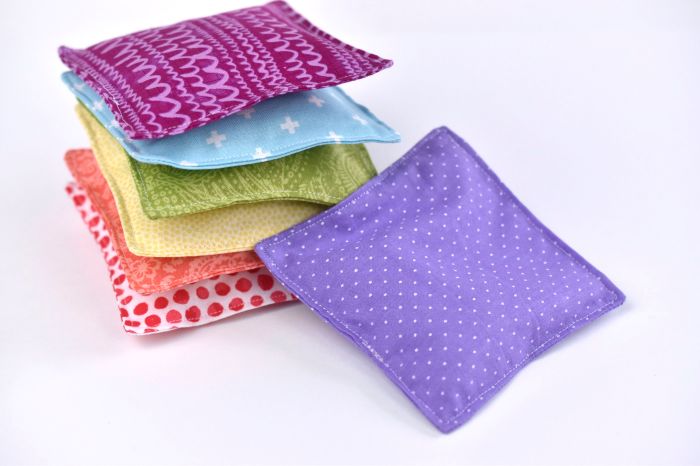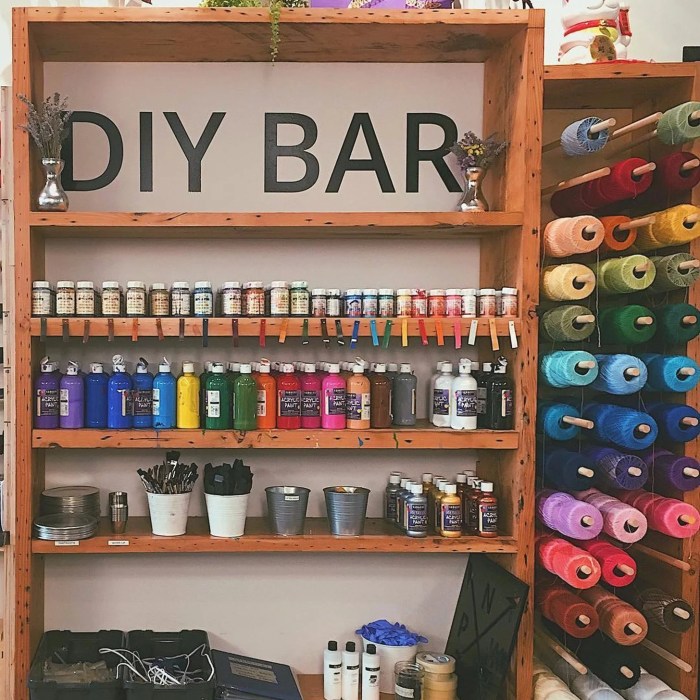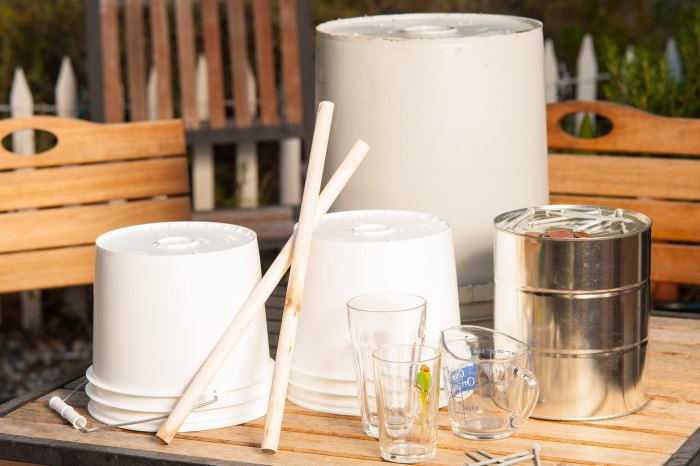DIY body lotion recipe opens a world of possibilities for crafting personalized skincare solutions that cater to your unique needs. It allows you to take control of the ingredients, ensuring that only the purest and most beneficial elements touch your skin. This journey into homemade body lotion begins with a simple understanding of the key ingredients and their roles, leading you to a personalized blend that nourishes and pampers.
From the rich emollience of shea butter to the soothing properties of aloe vera, you’ll discover a symphony of natural ingredients that work together to create a lotion that feels as good as it looks. This exploration will guide you through the process of crafting your own body lotion, from choosing the right oils and butters to incorporating essential oils for a touch of aromatherapy.
Introduction to DIY Body Lotion
Creating your own body lotion offers several advantages, from knowing exactly what goes into your skin to having the freedom to customize the scent and texture to your liking. It’s also a great way to save money and reduce waste by using natural and sustainable ingredients.
Homemade body lotions can be tailored to address specific skin concerns, whether it’s dryness, sensitivity, or acne. This allows you to create a product that is perfectly suited to your individual needs.
Key Ingredients in Body Lotions
The foundation of a body lotion is a combination of oils and emollients that work together to hydrate and nourish the skin. These ingredients provide the moisturizing and softening properties that make lotions effective.
Here are some common ingredients found in DIY body lotions:
- Oils: Oils like coconut oil, olive oil, almond oil, and jojoba oil are commonly used for their moisturizing and nourishing properties. They help to create a barrier on the skin, preventing moisture loss.
- Butters: Butters such as shea butter, cocoa butter, and mango butter are rich in fatty acids and vitamins that deeply moisturize and soften the skin. They also have anti-inflammatory and antioxidant properties.
- Emollients: Emollients, like beeswax and lanolin, help to smooth and soften the skin. They fill in the gaps between skin cells, creating a smoother surface and improving hydration.
- Humectants: Humectants, such as glycerin and hyaluronic acid, attract and retain moisture from the air, keeping the skin hydrated.
Types of Body Lotions
Body lotions can be categorized based on their consistency and intended use.
- Creams: Creams are thicker and richer than lotions, often containing a higher percentage of butter or wax. They provide intense hydration and are ideal for dry or sensitive skin.
- Lotions: Lotions are lighter and thinner than creams, typically containing a higher percentage of water. They are suitable for all skin types and are easily absorbed.
- Serums: Serums are highly concentrated and formulated to target specific skin concerns, such as wrinkles, hyperpigmentation, or acne. They are usually lightweight and quickly absorbed.
- Body Oils: Body oils are a popular choice for their moisturizing and nourishing properties. They are typically made with a blend of oils and can be used alone or layered over a lotion.
Basic DIY Body Lotion Recipe
This simple DIY body lotion recipe is a great starting point for creating your own customized skincare products. It uses readily available ingredients and is easy to make, allowing you to experiment with different scents and textures.
Ingredients and Their Roles
The ingredients in this recipe play specific roles in creating a smooth, hydrating, and nourishing body lotion.
- Shea butter: A rich and creamy butter known for its moisturizing and anti-inflammatory properties. It helps to soften and nourish the skin, providing long-lasting hydration.
- Coconut oil: A versatile oil that adds a silky texture and provides deep moisture. It is easily absorbed by the skin and has antimicrobial properties.
- Jojoba oil: A lightweight oil that mimics the skin’s natural sebum, making it a great choice for all skin types. It helps to regulate oil production and prevent breakouts.
- Aloe vera gel: A natural humectant that attracts and retains moisture. It soothes and cools the skin, making it ideal for irritated or sunburned skin.
- Vitamin E oil: An antioxidant that protects the skin from free radical damage and helps to improve skin elasticity.
- Essential oils (optional): Add your favorite scents and therapeutic benefits to the lotion. Lavender, chamomile, and tea tree oil are popular choices.
Step-by-Step Instructions
Here’s a detailed guide to creating your DIY body lotion:
- Gather your ingredients: Make sure you have all the necessary ingredients, including shea butter, coconut oil, jojoba oil, aloe vera gel, vitamin E oil, and your chosen essential oils (if using).
- Melt the shea butter and coconut oil: In a double boiler or heat-safe bowl over a pot of simmering water, melt the shea butter and coconut oil together. Stir occasionally until completely melted.
- Add the jojoba oil and aloe vera gel: Once the shea butter and coconut oil are melted, remove the bowl from the heat. Add the jojoba oil and aloe vera gel, stirring well to combine.
- Add the vitamin E oil and essential oils: Stir in the vitamin E oil and your chosen essential oils (if using). Remember to use essential oils sparingly, as they can be potent.
- Transfer to a container: Pour the mixture into a clean, airtight container. Allow the lotion to cool and solidify at room temperature.
- Store in a cool, dry place: Once solidified, store your DIY body lotion in a cool, dry place, away from direct sunlight. It should last for several weeks or months.
This DIY body lotion recipe is a great starting point for customizing your skincare routine. Experiment with different essential oils and ingredients to create a lotion that suits your specific needs and preferences.
Variations and Customization
The beauty of DIY body lotion is its flexibility. You can easily tailor the recipe to suit your skin type, preferences, and desired benefits. This section explores ways to personalize your body lotion.
Types of Oils and Their Benefits
Adding different oils to your lotion can enhance its moisturizing and therapeutic properties. Here’s a table showcasing common oils and their benefits:
| Oil | Benefits |
|—|—|
| Almond Oil | Nourishes and softens skin, reduces inflammation, suitable for sensitive skin. |
| Avocado Oil | Rich in vitamins and antioxidants, deeply moisturizes, helps with dry skin and eczema. |
| Coconut Oil | Antibacterial and antifungal properties, deeply moisturizes, can be comedogenic for some. |
| Jojoba Oil | Similar to skin’s natural sebum, helps regulate oil production, good for acne-prone skin. |
| Olive Oil | Rich in antioxidants, moisturizes and softens, can be heavy for some skin types. |
| Rosehip Oil | Reduces the appearance of scars and wrinkles, helps with hyperpigmentation. |
| Shea Butter | Deeply moisturizes, protects against sun damage, suitable for dry and sensitive skin. |
Adding Essential Oils for Fragrance and Therapeutic Effects
Essential oils offer a natural way to add fragrance and therapeutic benefits to your lotion. Here are some examples:
* Lavender Oil: Calming and relaxing, helps with sleep and anxiety.
* Tea Tree Oil: Antibacterial and antifungal, good for acne and blemishes.
* Chamomile Oil: Soothing and calming, helps with inflammation and skin irritation.
* Rose Oil: Aphrodisiac and uplifting, can help with mood and stress.
* Lemon Oil: Refreshing and uplifting, helps with energy and focus.
Note: Always dilute essential oils in a carrier oil (like almond oil or jojoba oil) before adding them to your lotion. A general guideline is to use 10-20 drops of essential oil per ounce of carrier oil.
Adjusting the Consistency of the Lotion
The consistency of your lotion can be adjusted based on your preference.
* Thicker Lotion: For a thicker lotion, increase the amount of shea butter or beeswax in your recipe.
* Lighter Lotion: For a lighter lotion, reduce the amount of shea butter or beeswax, or use a thinner carrier oil like almond oil or jojoba oil.
Storage and Shelf Life
Proper storage is essential to ensure your homemade body lotion remains effective and safe to use. Understanding the factors that affect shelf life will help you maximize its longevity and prevent spoilage.
Factors Affecting Shelf Life
The shelf life of your DIY body lotion is influenced by several factors, including:
- Ingredients: Some ingredients are naturally more prone to spoiling than others. For instance, oils with a high polyunsaturated fatty acid content, such as flaxseed oil, tend to oxidize more quickly, leading to rancidity.
- Water Content: Water provides a breeding ground for bacteria and mold. Lotions with higher water content are more susceptible to microbial growth, especially if they are not properly preserved.
- Preservatives: The inclusion of preservatives, such as vitamin E, grapefruit seed extract, or essential oils with antimicrobial properties, helps extend the shelf life by inhibiting microbial growth.
- Storage Conditions: Exposure to heat, light, and air can accelerate the degradation of ingredients and promote microbial growth. Storing your lotion in a cool, dark, and airtight container is crucial.
Signs of Spoilage
While the shelf life of DIY body lotion can vary depending on the ingredients and storage conditions, it’s generally recommended to use it within 6-12 months. However, you should always be alert for signs of spoilage, which may include:
- Change in Color or Texture: If your lotion changes color significantly, becomes cloudy, or develops an unusual texture, it may be a sign of spoilage.
- Unpleasant Odor: A rancid or sour smell indicates that the oils have oxidized or that bacteria are present.
- Separation: If the lotion separates into layers, it may be a sign that the ingredients are no longer compatible. This can happen if the emulsion wasn’t properly stabilized.
- Mold Growth: Visible mold growth is a clear indication of spoilage. Discard the lotion immediately.
DIY Body Lotion for Specific Skin Types: Diy Body Lotion Recipe
Creating a DIY body lotion allows you to tailor the recipe to your unique skin needs. Different skin types require different ingredients to achieve optimal hydration and balance. Here, we’ll explore how to adjust your basic DIY body lotion recipe to address dry, oily, and sensitive skin.
Body Lotion for Dry Skin, Diy body lotion recipe
Dry skin often feels tight, itchy, and flaky. It lacks moisture and sebum, the skin’s natural oil. To address this, your DIY body lotion should focus on deeply hydrating and nourishing the skin.
Ingredients for Dry Skin
- Oils: Choose oils rich in fatty acids, such as coconut oil, olive oil, jojoba oil, argan oil, or shea butter. These oils help to lock in moisture and restore the skin’s natural barrier.
- Humectants: Humectants draw moisture from the air and into the skin. Include ingredients like glycerin, aloe vera gel, or hyaluronic acid in your recipe.
- Emollients: Emollients soften and smooth the skin. Consider adding cocoa butter, mango butter, or avocado oil for extra emollience.
Tips for Customizing for Dry Skin
- Increase the oil content: Dry skin benefits from a higher oil-to-water ratio. You can increase the amount of oil in your recipe to create a richer, more emollient lotion.
- Add a thickener: If your lotion is too thin, consider adding a thickener like beeswax or shea butter to create a more luxurious texture.
- Use a gentle fragrance: Avoid strong fragrances that can irritate sensitive dry skin. Opt for natural essential oils like lavender or chamomile.
Body Lotion for Oily Skin
Oily skin tends to be shiny, prone to breakouts, and may feel heavy. Your DIY body lotion should focus on balancing oil production and keeping pores clear.
Ingredients for Oily Skin
- Lightweight Oils: Choose oils that are easily absorbed and won’t clog pores, such as jojoba oil, rosehip oil, or grapeseed oil. Jojoba oil is particularly helpful as it mimics the skin’s natural sebum.
- Anti-inflammatory Agents: Ingredients like tea tree oil, witch hazel, or aloe vera gel can help soothe inflammation and reduce breakouts.
- Humectants: Humectants are still important for oily skin, as they help to hydrate without adding excess oil. Use glycerin or hyaluronic acid sparingly.
Tips for Customizing for Oily Skin
- Decrease the oil content: Use a lower oil-to-water ratio to avoid making the skin feel greasy.
- Add a light thickener: A small amount of xanthan gum or guar gum can help thicken the lotion without making it too heavy.
- Avoid heavy emollients: Skip ingredients like cocoa butter or mango butter, which can clog pores and contribute to breakouts.
Body Lotion for Sensitive Skin
Sensitive skin is easily irritated, prone to redness, and may experience itching or burning. Your DIY body lotion should be gentle, hypoallergenic, and free of potential irritants.
Ingredients for Sensitive Skin
- Gentle Oils: Choose oils known for their calming and soothing properties, such as almond oil, avocado oil, or calendula oil. Avoid essential oils, as they can be irritating.
- Soothing Agents: Include ingredients like aloe vera gel, chamomile extract, or oatmeal to calm inflammation and reduce redness.
- Humectants: Hyaluronic acid is a gentle humectant suitable for sensitive skin.
Tips for Customizing for Sensitive Skin
- Keep it simple: Start with a basic recipe and gradually add ingredients as needed. Less is more when it comes to sensitive skin.
- Test on a small area: Before applying the lotion all over, test it on a small patch of skin to ensure it doesn’t cause any irritation.
- Avoid harsh preservatives: Opt for natural preservatives like grapefruit seed extract or rosemary extract.
DIY Body Lotion Recipes for Different Purposes
Crafting your own body lotion allows you to customize your skincare routine based on your unique needs and preferences. By selecting specific ingredients, you can target specific skin concerns and achieve desired results. Let’s explore some DIY body lotion recipes designed for various purposes, highlighting the unique benefits of each ingredient.
Anti-Aging Body Lotion
Anti-aging body lotions aim to reduce the appearance of fine lines, wrinkles, and age spots, promoting a youthful and radiant complexion.
Here’s a recipe for an anti-aging body lotion:
* 1/2 cup shea butter
* 1/4 cup coconut oil
* 1/4 cup jojoba oil
* 2 tablespoons aloe vera gel
* 1 tablespoon vitamin E oil
* 10 drops rosehip seed oil
* 5 drops frankincense essential oil
Shea butter is rich in vitamins A and E, known for their antioxidant and skin-regenerating properties. Coconut oil provides deep hydration and moisture, while jojoba oil mimics the skin’s natural sebum, promoting a healthy oil balance. Aloe vera gel soothes and heals, while vitamin E oil further enhances antioxidant protection. Rosehip seed oil is renowned for its ability to fade hyperpigmentation and scars, while frankincense essential oil possesses anti-inflammatory and regenerative properties.
- To use this lotion effectively, apply it to clean, dry skin in gentle, upward strokes, focusing on areas prone to wrinkles and age spots. Use it daily for optimal results.
Moisturizing Body Lotion
Moisturizing body lotions are essential for maintaining skin hydration, preventing dryness, and enhancing skin’s overall softness and suppleness.
Here’s a recipe for a deeply moisturizing body lotion:
* 1/2 cup cocoa butter
* 1/4 cup mango butter
* 1/4 cup sweet almond oil
* 2 tablespoons avocado oil
* 1 tablespoon honey
* 1 teaspoon vitamin E oil
Cocoa butter is a rich source of fatty acids, providing intense hydration and moisture retention. Mango butter is known for its nourishing and softening properties, while sweet almond oil is a light and easily absorbed oil that effectively moisturizes the skin. Avocado oil is rich in vitamins A, D, and E, offering antioxidant and anti-inflammatory benefits. Honey acts as a humectant, drawing moisture to the skin, while vitamin E oil further enhances moisture retention.
- Apply this lotion generously to your skin after showering or bathing, focusing on dry areas. For best results, use it daily or as needed.
Soothing Body Lotion
Soothing body lotions are ideal for calming irritated, inflamed, or sensitive skin. They provide relief from redness, itching, and discomfort, promoting a sense of comfort and well-being.
Here’s a recipe for a soothing body lotion:
* 1/2 cup calendula infused oil
* 1/4 cup coconut oil
* 1/4 cup aloe vera gel
* 1 tablespoon chamomile tea
* 10 drops lavender essential oil
Calendula infused oil is known for its anti-inflammatory and soothing properties, effectively calming irritated skin. Coconut oil provides deep hydration and moisture, while aloe vera gel soothes and heals. Chamomile tea is renowned for its calming and anti-inflammatory properties, further reducing redness and irritation. Lavender essential oil possesses calming and relaxing properties, promoting a sense of tranquility.
- Apply this lotion to affected areas as needed, focusing on areas experiencing redness, itching, or discomfort. Allow the lotion to absorb fully into the skin for optimal relief.
DIY Body Lotion Safety and Precautions
While making your own body lotion can be a rewarding experience, it’s essential to prioritize safety throughout the process. By following these tips, you can ensure a safe and enjoyable DIY lotion-making experience.
Ingredient Handling and Safety
Proper handling of ingredients is crucial to prevent contamination and ensure the safety of your lotion.
- Always wash your hands thoroughly before and after handling ingredients.
- Use clean utensils and containers to avoid cross-contamination.
- Store ingredients in airtight containers in a cool, dry place, away from direct sunlight.
- Read the safety information on all ingredient labels carefully and follow any specific handling instructions.
- Avoid using ingredients that are past their expiration date.
Potential Allergic Reactions
Allergic reactions to DIY lotions are possible, especially if you have sensitive skin or are using essential oils.
- Before using any new ingredient, perform a patch test by applying a small amount to a hidden area of skin, like the inside of your elbow or behind your ear.
- Wait 24-48 hours to observe any signs of irritation, redness, itching, or swelling.
- If you experience any reaction, discontinue use and consult a dermatologist.
- Avoid using essential oils in your lotion if you have a history of allergies or sensitivities.
- If you’re unsure about an ingredient, consult a qualified professional.
Testing Lotion Before Full Application
It’s always a good idea to test your DIY lotion on a small area of skin before applying it to your entire body.
- Apply a small amount of lotion to a hidden area of skin, such as the inside of your wrist or elbow.
- Wait 24 hours to observe any reactions, such as redness, itching, or irritation.
- If you experience any adverse reactions, discontinue use and consult a dermatologist.
Benefits of DIY Body Lotion
Creating your own body lotion at home offers several advantages over relying on commercially available options. You gain complete control over the ingredients, ensuring a product tailored to your specific needs and preferences. Additionally, you can significantly reduce costs and minimize your environmental impact.
Cost Savings
Making your own body lotion can be significantly more cost-effective than purchasing it from a store. Store-bought lotions often contain expensive ingredients, packaging, and marketing costs, which are reflected in the price. By using readily available and often inexpensive ingredients like shea butter, coconut oil, and essential oils, you can create a high-quality body lotion for a fraction of the cost.
Tips for Successful DIY Body Lotion
Creating your own body lotion can be a rewarding experience, allowing you to customize it to your specific needs and preferences. However, achieving a smooth and creamy consistency requires some attention to detail and understanding of the process. Here are some tips to help you make the perfect homemade body lotion.
Achieving a Smooth and Creamy Consistency
A smooth and creamy consistency is essential for a pleasant application experience. To achieve this, consider the following:
- Use a high-quality emulsifier: Emulsifiers are crucial for binding the water and oil phases of your lotion, creating a stable and smooth texture. Popular choices include:
- Cetyl alcohol: This is a natural fatty alcohol that provides a creamy texture and helps to thicken the lotion.
- Stearic acid: This fatty acid acts as a thickener and helps to stabilize the emulsion.
- Glyceryl stearate: This is a natural emulsifier derived from vegetable oils and glycerin.
- Properly heat and cool the phases: Heating the oil and water phases separately before combining them helps to ensure that the emulsifier can effectively bind them together. Avoid overheating, as this can damage the ingredients.
- Blend thoroughly: Using an immersion blender or whisk to blend the phases together is essential for creating a smooth and consistent texture. Ensure that there are no lumps or clumps.
- Add thickeners as needed: If your lotion is too thin, you can add thickeners such as shea butter, cocoa butter, or beeswax. Start with a small amount and gradually add more until you achieve the desired consistency.
Troubleshooting Common Issues
While making body lotion, you may encounter some common issues. Here’s how to address them:
- Lotion is too thin: This could be due to insufficient emulsifier or lack of thickeners. Add more emulsifier or a thickener like shea butter or beeswax.
- Lotion is too thick: This could be due to excessive thickeners or an overheated emulsifier. Reduce the amount of thickeners or use a lower heat setting when blending the phases.
- Lotion separates: This usually happens when the emulsifier is not effective or the phases were not properly blended. Ensure you use a high-quality emulsifier and blend thoroughly. You can also try adding a small amount of xanthan gum for extra stability.
- Lotion is grainy: This could be due to the presence of undissolved ingredients or improper blending. Ensure all ingredients are finely ground and blended thoroughly.
Importance of Using High-Quality Ingredients
The quality of your ingredients directly impacts the final product’s effectiveness, texture, and longevity.
- Choose organic ingredients: Opt for organic ingredients whenever possible, as they are free from harmful pesticides and chemicals.
- Consider the source: Research the source of your ingredients and choose reputable suppliers known for their quality and sustainability practices.
- Store ingredients properly: Store your ingredients in airtight containers in a cool, dark place to preserve their freshness and potency.
Embarking on the DIY body lotion journey is a rewarding experience, empowering you to create skincare that aligns with your individual preferences and needs. With the knowledge of key ingredients, the flexibility to customize, and the satisfaction of crafting something unique, you’ll be well-equipped to create a body lotion that nourishes and pampers your skin. So, let’s delve into the world of homemade body lotion, where creativity meets care, and discover the magic of personalized skincare.
Crafting your own body lotion is a fun and rewarding experience, allowing you to tailor the ingredients to your specific needs. While you’re focusing on nourishing your skin, consider exploring the benefits of the saxenda injection if you’re seeking weight management support. After all, a healthy lifestyle includes both internal and external care, and a good body lotion can complement a healthy weight journey.





